Beginning in 2001, the ICAA established a rigorous publishing program that serves as the foundation for the research, scholarship, and exhibition initiatives of the ICAA and the Latin American Art Department of the MFAH.
Books and Catalogues
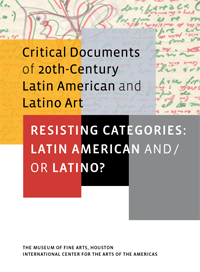
CRITICAL DOCUMENTS OF 20TH CENTURY LATIN AMERICAN AND LATINO ART
An essential part of the ICAA Documents Project is an anthology series titled Critical Documents of 20th-Century Latin American and Latino Art, which is dedicated to providing access to essential resources related to Latin American and Latinx art and culture.
The published documents are culled from the ICAA Digital Archive and translated into English, enabling scholars and students to consult materials from repositories in Latin America and the United States that are not easily accessed. The published texts include manifestos, essays, lectures, correspondence, manuscripts, interviews, testimonies, and other textual materials by authoritative sources from Latin America and the United States who have played a fundamental role in the development of modern and contemporary art. Annotated introductions to each of the texts together with newly commissioned essays by leading scholars in the field provide the historic, artistic, and intellectual contexts for the recovered sources as well as outline directions for future research.
The series is published by the Museum of Fine Arts, Houston, and distributed by Yale University Press.
Resisting Categories: Latin American and/or Latino? (2012) is the first volume in the series. Edited by Mari Carmen Ramírez, Tomás Ybarra-Frausto, and Héctor Olea, it tracks the centuries-old debate over the inadequacy of terms such as “Latin American” and “Latino” to convey the complexity of these cultural groups.
The second volume in the series, National Imaginaries/Cosmopolitan Identities, explores the tension between the “national” and the “universal” (or “tradition” and modernity”), engaging a host of artistic manifestations that escape the guidelines of Modernism or the avant-garde. The document selection phase for Volume II has progressed under the leadership of editors Natalia Majluf, Karen Cordero Reiman, and Víctor A. Sorell, and Volume II is currently slated for publication in 2022.
The third volume in the series, New World Geometric and Constructive Utopias, considers the redefinition and expansion of the Constructivist legacy in the hands of the post-World War II abstract and geometric avant-garde movements of Argentina, Brazil, Venezuela, and Uruguay.

BEATRIZ GONZÁLEZ: A RETROSPECTIVE , PUBLISHED BY THE PÉREZ ART MUSEUM MIAMI
(2019)
Beatriz González: A Retrospective is the first large-scale U.S. exhibition dedicated to the work of Colombian artist Beatriz González.
Based in Bogotá, González (born 1938) is not only an internationally celebrated artist but also one of the few living representatives of the “radical women” generation from Latin America. González’s groundbreaking production spans more than six decades of intensive research yet remains largely unfamiliar to audiences in the United States. One of the most comprehensive displays of the artist’s work to date, Beatriz González: A Retrospective seeks to remedy this lag by presenting more than 100 works, from the early 1960s through the present, that embody the full scope of González’s oeuvre. The retrospective offers an expansive look at the artist’s unique and influential practice through her most iconic works, many of which have rarely been seen outside of Colombia. Selections range from two-dimensional paintings, drawings, silkscreen prints, and curtains, to three-dimensional recycled furniture (beds, cribs, tables, armoires) and everyday objects (trays, TVs, cigar boxes), etc. The illustrated exhibition catalogue includes essays by Tobias Ostrander, Mari Carmen Ramírez, Carolina Ponce de León, and Gonzalo Sánchez G.
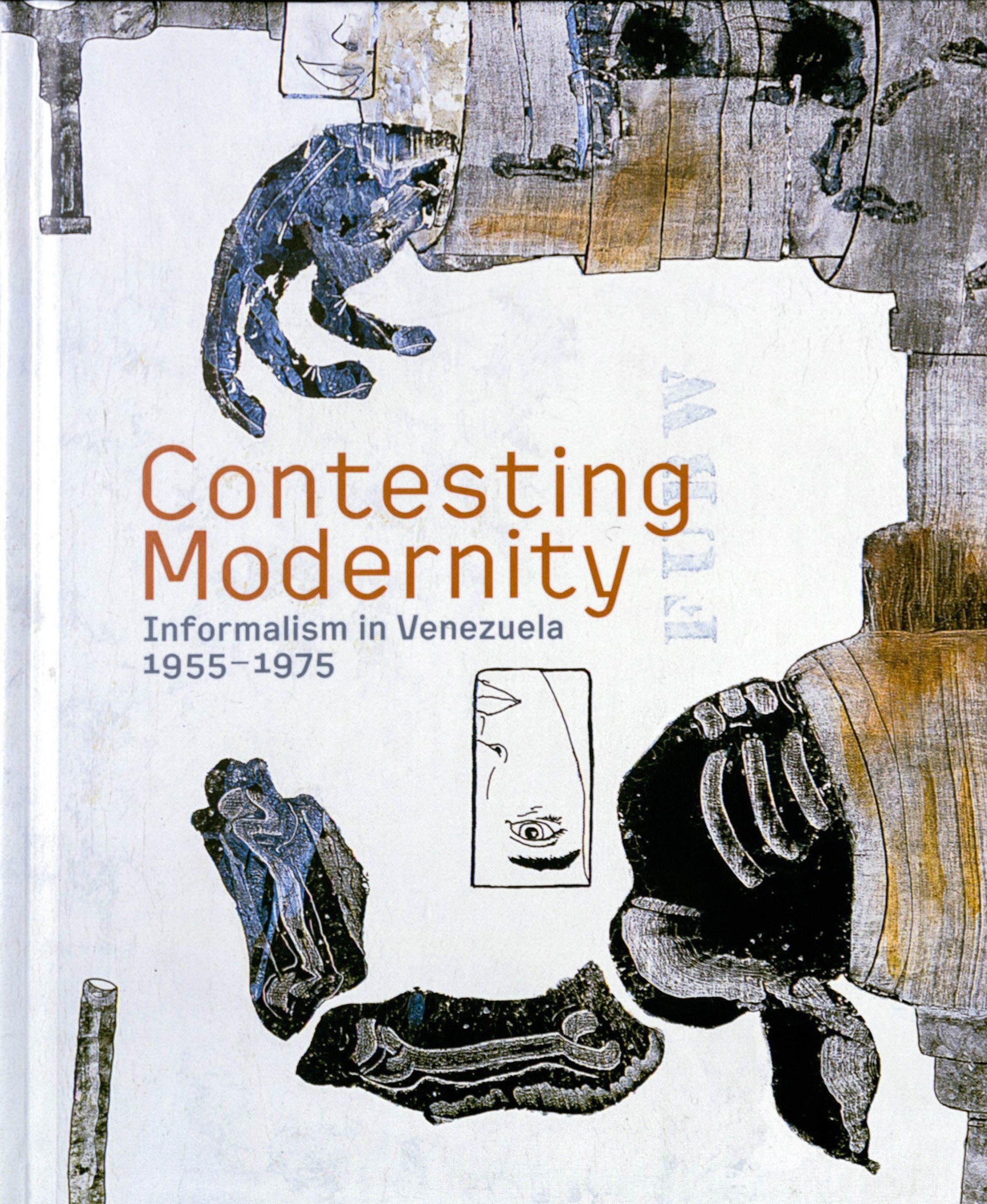
CONTESTING MODERNITY: INFORMALISM IN VENEZUELA, 1955-1975
(2018)
A fascinating and radical exploration of Venezuelan Informalism, Contesting Modernity charts the provocative movement’s history from its beginnings in the mid-1950s to its last manifestations in the 1970s.
Essays by esteemed scholars discuss the variety, richness, and complexity of Informalism and examine the ways in which Venezuelan artists embraced many of the abstract, gestural tendencies contemporaneously addressed and developed in North American Abstract Expressionism, Tachism, and Art Informel. Providing a thorough and comprehensive overview of this artistically fertile, yet underappreciated movement, Contesting Modernity highlights the diverse approaches and the wide range of media employed by Informalism’s key practitioners, including Alberto Brandt, Daniel González, Elsa Gramcko, Francisco Hung, and the collective El Techo de la Ballena. Also featured are stunning works by internationally acclaimed artists who also experimented with Informalism, such as Carlos Cruz-Diez, Alejandro Otero, and Jesús Rafael Soto. With texts by María Gaztambide, Josefina Manrique, Mari Carmen Ramírez, Gabriela Rangel, and Tahía Rivero.
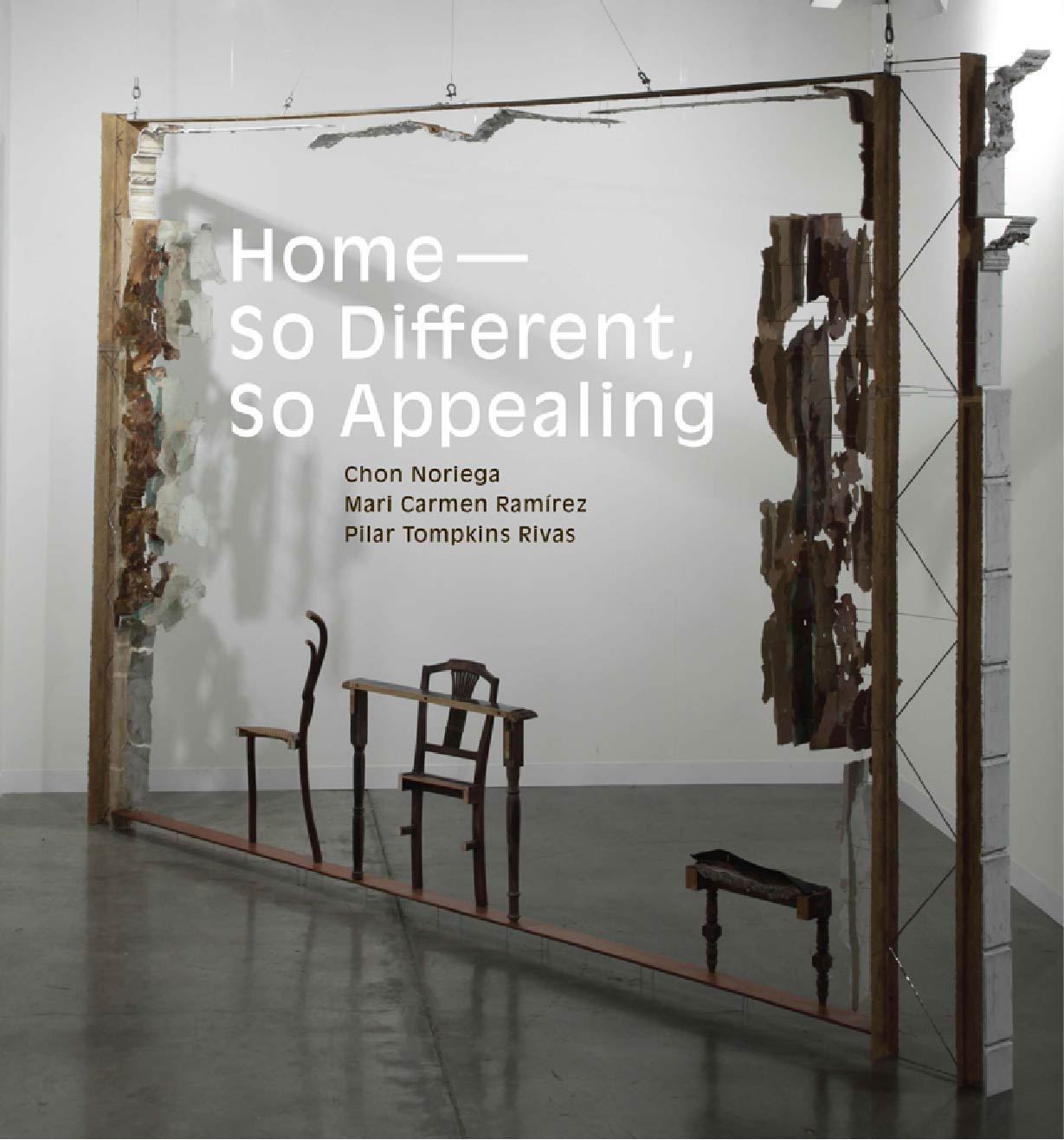
HOME—So Different, So Appealing, co-published by the MFAH, the UCLA Chicano Studies Research Center Press and the Los Angeles County Museum of Art
(2017)
“Home”—signaling a dwelling, residence, or place of origin—embodies one of the most basic concepts for understanding an individual or group within a larger physical and social environment.
Yet home has been a little noted, although prevalent feature in art since the 1950s, a period in which artists challenged the traditional “object” of the visual arts through the use of material and media culture, new forms, and performative actions and processes. This illustrated catalogue, with texts by Chon A. Noriega, Mari Carmen Ramírez, and Pilar Tompkins Rivas, presents the work of diverse U.S. Latinx and Latin American artists whose engagement with the concept of home provides the basis for an alternative narrative of postwar art. Their work brings an impressive array of formal languages, conceptual strategies, and art-historical references together with the varied social concerns characterizing both the postwar period in the Americas and an emerging global economy impacting day-to-day life.
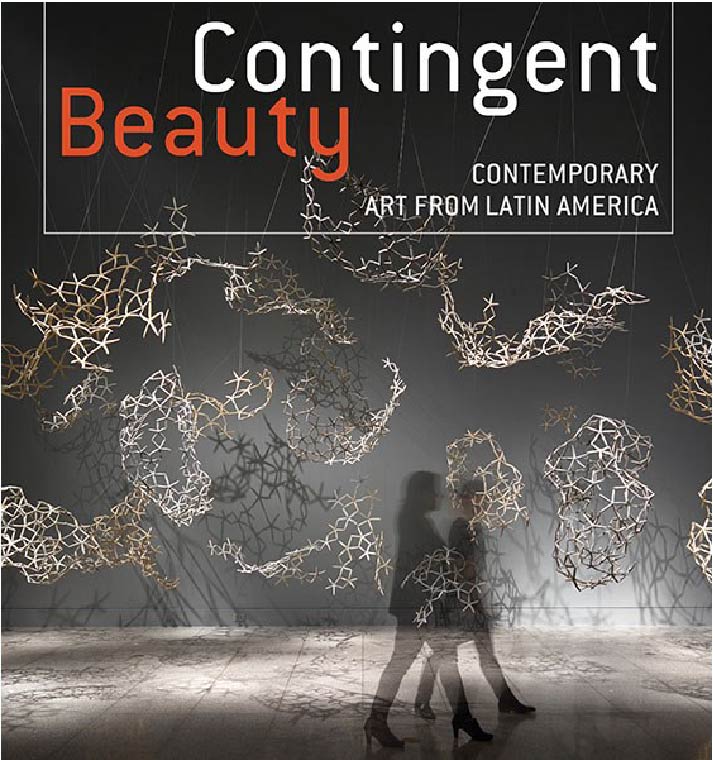
CONTINGENT BEAUTY: CONTEMPORARY ART FROM LATIN AMERICA
(2015)
Encompassing a variety of media—including painting, drawing, sculpture, and video—the majority of the innovative works included in the exhibition (and its corresponding publication) were culled from the holdings of the Museum of Fine Arts, Houston, which possesses an exceptional collection of contemporary Latin American art.
Many Latin American artists seamlessly intertwine aesthetic refinement with biting critiques of social and political issues. Contingent Beauty assembles major sociopolitical works (in a stunningly diverse range of media) by more than 20 such artists who have made significant contributions to the global art scene over the past 30 years. Edited by Mari Carmen Ramírez; with contributions by María C. Gaztambide, Rachel Mohl, Beatriz R. Olivetti, Gabriela Rangel, Tahía Rivero, Osvaldo Sánchez, Michael Wellen, and Daniela Wüstenberg.

UNTANGLING THE WEB: GEGO'S RETICULÁREA, AN ANTHOLOGY OF CRITICAL RESPONSE
(2013)
Gego (born Gertrud Goldschimdt, 1912–1994) pioneered a clear new direction in art with her innovative sculptures of the 1960s and 1970s. Born in Germany, she fled the Nazi regime and emigrated to Caracas, Venezuela, where she absorbed modernist trends but ultimately forged a personal and singular artistic path.
Exploring the concept of “the line, space, and time,” she linked nodal pieces of metal to create weblike geometric forms, which she called “drawings in space.” These technical experiments culminated in Reticulárea, a massive netlike sculptural installation first presented at the Museo de Bellas Artes, Caracas, in 1969. This groundbreaking work had major repercussions in the art world and marked a turning point in Gego’s innovative career. Centered on the various iterations of this work and its artistic impact, this bilingual anthology “untangles the web” as it brings together images as well as documentary materials and primary texts by artists, critics, writers, and by Gego herself. Organized by María Elena Huizi and Ester Crespín; edited by Mari Carmen Ramírez and Melina Kervandjian.

ANTONIO BERNI: JUANITO AND RAMONA
(2013)
Written by leading scholars of Latin American art—led by Marcelo Pacheco and ICAA founders Héctor Olea and Mari Carmen Ramírez—this volume presents the first comprehensive survey of the internationally acclaimed Juanito and Ramona series by Argentinean artist Antonio Berni (1905–1981).
Richly illustrated with more than 250 color images, the book brings together nearly two decades of Berni’s monumental, mixed-media reliefs and assemblages, experimental and pioneering works on paper, and sculptural constructions made of junk and found, everyday objects. A figurative artist, Berni is known for his aesthetic originality and for art steeped in social commentary. In the 1950s, he inaugurated a series of works that documented the fictional and real lives of two characters, Juanito Laguna and Ramona Montiel. Through the stories of Juanito, a denizen of Argentina’s shantytowns, and Ramona, who rises from the working class to the upper echelons of society, Berni addresses extreme sociopolitical topics, from industrialization to neocolonialism to economic backwardness and their effects on the populations of underdeveloped countries.
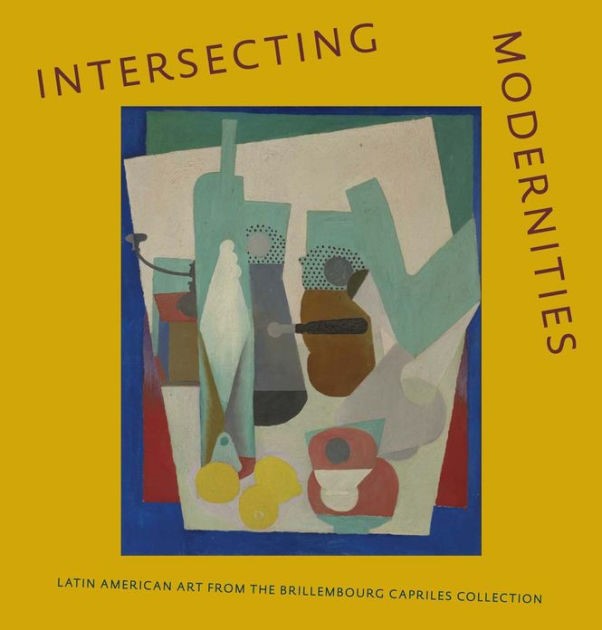
INTERSECTING MODERNITIES: LATIN AMERICAN ART FROM THE BRILLEMBOURG CAPRILES COLLECTION
(2013)
Tanya Capriles de Brillembourg has assembled a refined collection of modern Latin American art. Including masterworks by some of the most inventive artists of the 20th and 21st centuries, this profusely illustrated volume offers insightful essays that provide context for these rarely exhibited works from her collection.
Joaquín Torres-García, Diego Rivera, Rufino Tamayo, Armando Reverón, and Wifredo Lam are among the artists represented in the volume, which also includes brief artist biographies as well as an interview by Mari Carmen Ramírez with the collector exploring Capriles de Brillembourg’s unique philanthropic path. Edited by Mari Carmen Ramírez, who authors the introductory essay, with contributions by Cecilia Fajardo-Hill, María C. Gaztambide, Marcela Guerrero, Abigail McEwen, Rachel Mohl, James Oles, Mari Carmen Ramírez, and Michael Wellen.
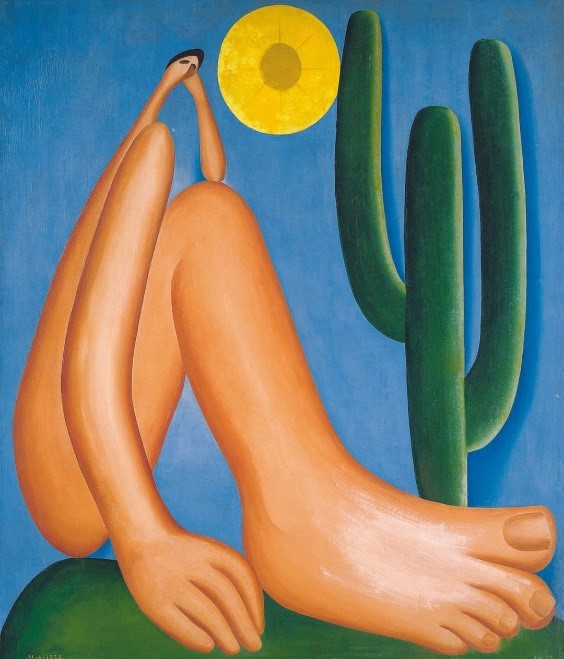
MODERN AND CONTEMPORARY MASTERWORKS FROM MALBA - FUNDACIÓN COSTANTINI
(2012)
In 2001, Eduardo Costantini, the founder of the Museo de Arte Latinoamericano de Buenos Aires (Malba), began collecting artworks from across Latin America. Today, the renowned Costantini Collection consists of more than 200 works, encompassing drawings, paintings, sculptures, and objects by artists from various countries, including Argentina, Brazil, Colombia, Costa Rica, Cuba, Chile, Ecuador, Mexico, Uruguay, and Venezuela.
In the spirit of cultural exchange, Malba and the ICAA (International Center for the Arts of the Americas) at the Museum of Fine Arts, Houston, came together in 2012 to exhibit 50 of these works, spanning from the beginning of the 20th century to the present. Mari Carmen Ramírez interviews Costantini, the businessman and cultural promoter, shedding light on his philosophy of collecting; and texts by Marcelo Pacheco offer insights into the broad range of modern and contemporary art created in Latin America.
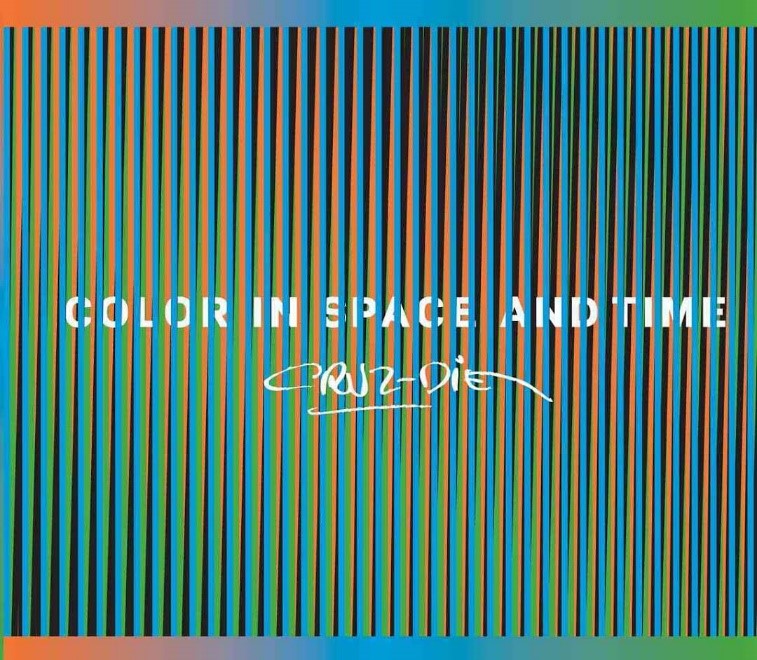
CARLOS CRUZ- DIEZ: COLOR IN SPACE AND TIME
(2011)
This monumental volume traces the full career arc of one of the most prominent artist-theoreticians, not just in Latin America but in the 20th century. Half a century of exhaustive work and research into how color exists in time and space, positions Cruz-Diez beyond the known Kinetic boundaries of “retinality.”
The catalogue provides a panoramic view of his production, from early, rarely published figurative works, to interactive series that continued to his death in 2019, to architectural projects in public spaces around the world. The book features an interview with Cruz-Diez in which he discusses his approach to “doing and theorizing”; a selection of his own writings; texts by Frank Popper, Alfredo Boulton, and Jean Clay—three early champions of his work; and a 75-page illustrated chronology. Edited by Mari Carmen Ramírez and Héctor Olea (who also author a number of theoretical essays), with contributions by Silvia Ana Ramírez de Cruz.
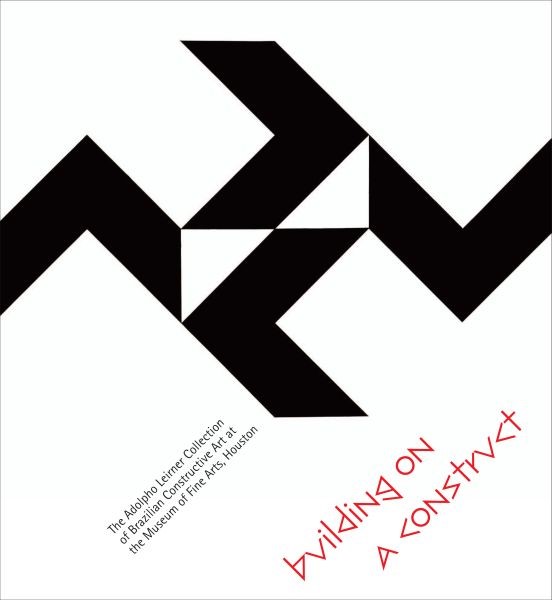
BUILDING ON A CONSTRUCT: THE ADOLPHO LEIRNER COLLECTION OF BRAZILIAN CONSTRUCTIVE ART AT THE MUSEUM OF FINE ARTS, HOUSTON
(2009)
Against the backdrop of the acquisition by the Museum of Fine Arts, Houston, of the Adolpho Leirner collection in 2007, this volume assesses the state of research on avant-garde artists and groups that constituted the Concrete and Neo-Concrete tendencies in postwar Brazilian art and seeks to generate updated frameworks and new lines of research for the interpretation of these interrelated tendencies.
Edited by Héctor Olea and Mari Carmen Ramírez, the book presents 13 specially commissioned essays by a group of distinguished artists, critics, and scholars from the Americas. In addition to these essays, Olea interviews Abraham Palatnik about his Aparato cinecromático. Contributors also include the Concrete artist Alexandre Wollner, Aracy Amaral, Nicolau Sevcenko, María Amalia García, Francisco Alambert, Luiz Camillo Osorio, and Rodrigo Naves, among others.

HÉLIO OITICICA: THE BODY OF COLOR
(2007)
Drawing on new research that explores the Brazilian artist’s sources and his (generally undisclosed) “modernist” concerns, the exhibition provides the resulting insights through previously unseen works.
Seeking to avoid the usual clichés about his work and myth, this volume, conceived and edited by the exhibition’s curator, Mari Carmen Ramírez, was undoubtedly the first major English-language publication on the theoretical-practical contribution to the chromatic aspect of the work of the Brazilian artist Hélio Oiticica (1937–1980). The Body of Color traces the conceptual and technical processes that led to Oiticica’s emancipation of color into space through the various series that he created. The book features essays by Mari Carmen Ramírez; Luciano Figueiredo, director of the Centro Hélio Oiticica in Rio de Janeiro; and Wynne H. Phelan, conservation director at the MFAH at the time of publication, who provides scientific insight into the artist’s inks, mixtures, and applications; also included are English translations of some of Oiticica’s previously unpublished texts.

CONSTRUCTING A POETIC UNIVERSE: THE DIANE AND BRUCE HALLE COLLECTION OF LATIN AMERICAN ART
(2007)
This examination of the Diane and Bruce Halle Collection considers, through the lens of issues such as introspection and identity, theatricality and performance, and the rise of multiculturalism and globalism in contemporary art, works by artists from Mexico, Central and South America, and the Caribbean, as well as those by American and European artists based in Latin America and Latin American artists based in North America and Europe.
Providing a truly artistic dimension for this far-reaching, intensely poetic dialogue, the catalogue includes illuminating essays by Beverly Adams, Juan Ledezma, Mari Carmen Ramírez, Suely Rolnik, Osvaldo Sánchez, and Sonia Salzstein—considered some of the region’s and the field’s leading scholarly practitioners. Beverly Adams authors the introduction.

DIMENSIONS OF CONSTRUCTIVE ART IN BRAZIL: THE ADOLPHO LEIRNER COLLECTION
(2007)
This richly illustrated book salutes the 2007 acquisition by the Museum of Fine Arts, Houston, of the Adolpho Leirner Collection of Brazilian Constructive Art, one of the most perceptive, selective, and complete collections in the world devoted to modern Latin American art of the 1950s and 1960s.
Authored by Mari Carmen Ramírez and Adolpho Leirner, the catalogue illustrates and documents the history of the Constructive movement in Brazil, and includes a significant number of paradigmatic works by artists such as Hélio Oiticica and Lygia Clark in Rio de Janeiro, and Luis Sacilotto and Waldemar Cordeiro in São Paulo.

VERSIONS AND INVERSIONS: PERSPECTIVES ON AVANT-GARDE ART IN LATIN AMERICA
(2006)
This third bilingual edition of the ICAA-MFAH scholarly colloquia book series brings together texts and commentary by leading critics, curators, and artists who gathered together at a symposium in 2004 at the Museum of Fine Arts, Houston, in conjunction with the critically acclaimed exhibition Inverted Utopias: Avant-Garde Art in Latin America (2004), which focused on the development of avant-garde art in Latin America from 1920 to 1970.
Organized and edited by Héctor Olea and Mari Carmen Ramírez, the book features texts by Lucy R. Lippard and Robert Storr; the Australian conceptual artist and academic Terry Smith; and, representing Latin America, the visual artist Luis Camnitzer and the critics and curators Gabriel Peluffo Linari and Andrea Giunta, among others. The avant-garde in America and Europe, Argentinean art in the 1960s, Pedro Figari’s prehistoric “feismo” take on the idea of antropopepsia, Brazilian art trends of the 1960s, and Latin American Conceptualism are among the wide range of topics covered in this publication.
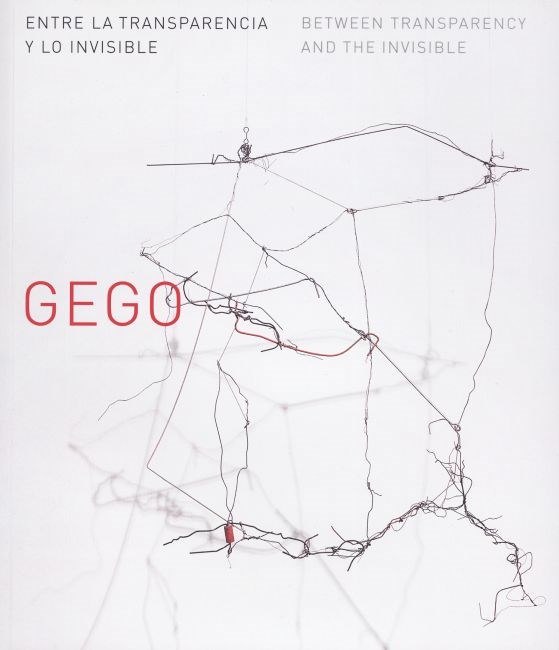
GEGO: ENTRE LA TRANSPARENCIA Y LO INVISIBLE/ GEGO: BETWEEN THE TRANSPARENCY AND THE INVISIBLE
(2006)
German-Venezuelan artist, Gego (Gertrude Goldschmidt, 1912–1994), produced a huge range of line-based abstract work, including drawings, prints, and wire sculptures.
Focusing on a rare series of monotypes from the early 1950s, drawings and prints, and—her hybrid creations, part drawing and part sculpture, designed to cast shadows on the wall—dibujos sin papel (drawings without paper, as she called them) and tejeduras (woven strips of colored paper cut from the cigarette packs discarded by this chain smoker) of the late 1970s and 1980s, this fascinating book traces Gego’s exploration of line and space. Catherine de Zegher, Robert Storr, Josefina Manrique, and Mari Carmen Ramírez, the curator of the exhibition, contributed essays to this publication.

SABIDURAS Y OTROS TEXTOS DE GEGO/SABIDURAS AND OTHER TEXTS BY GEGO
(2005)
Five years after the death of the German-born, Venezuelan artist Gego (Gertrude Goldschmidt, 1912–1994), a folder was found among her belongings in a storage trunk; the word Sabiduras (loosely translated as “Words of Wisdom”) were written on the cover.
The contents of the folder were developed into an important book that offers revealing insights into an artist who rarely spoke (and wrote even less) about her work and goals. This book contains the Gego’s previously unknown texts, word poems, and handwritten notes. All of these writings are assembled and published for the first time, providing an unprecedented look at Gego’s philosophy and art, creative thought process, and vast knowledge. Compiled and edited by María Elena Huizi and Josefina Manrique, Sabiduras also includes an introduction by Mari Carmen Ramírez.
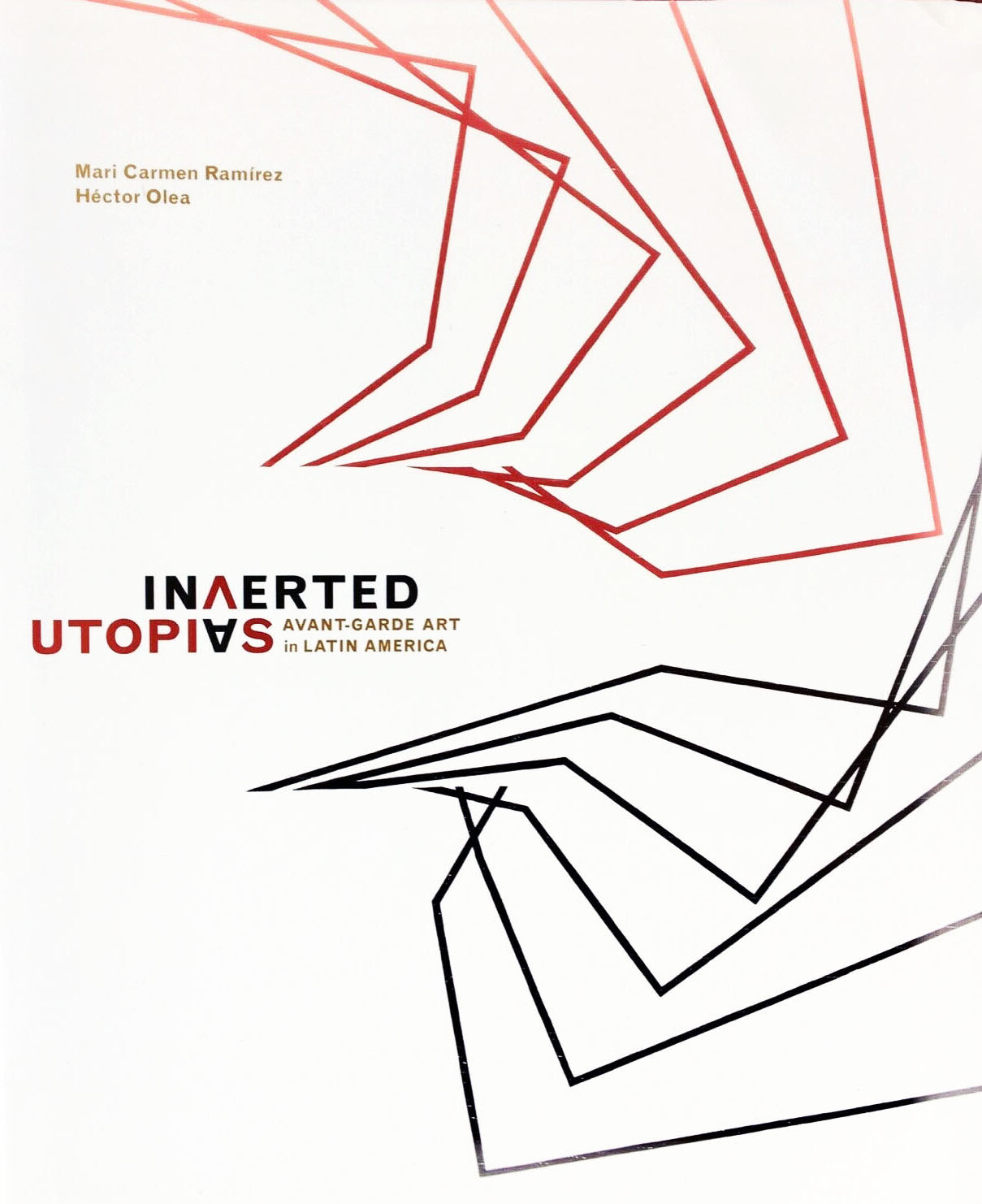
INVERTED UTOPIAS: AVANT-GARDE ART IN LATIN AMERICA
(2004)
In the 20th century, Latin America’s avant-garde artists created a dialectic of theory and practice such as had seldom been seen in the history of art, implementing it through a series of extraordinary and highly innovative paintings, sculptures, assemblages, mixed-media works, and installations.
This book sheds light (via 93 documents provided by some of the participants) on the reciprocity between written and visual works. Organized, curated, and presented by Héctor Olea and Mari Carmen Ramírez, the exhibition was conceived and guided by—with an understanding of the tensions and counterpoints that transcend periods and countries—Theodor Adorno’s concept of “Konstellationen”; it encompassed over 250 works by some 70 artists (including precursors, inventors, Kinetic artists, Kinetic works created with light and water, texture and retinality, and the most radical political conceptualism). The essays were authored by the curators and an illustrious group of critics in this field, such as Guy Brett, Paulo Herkenhoff, Marcelo Pacheco, and Luis Pérez Oramas, among others. The exhibition was awarded first prize at by the International Association of Art Critics (AICA) in the “Thematic Exhibition in the U.S.A.” category.
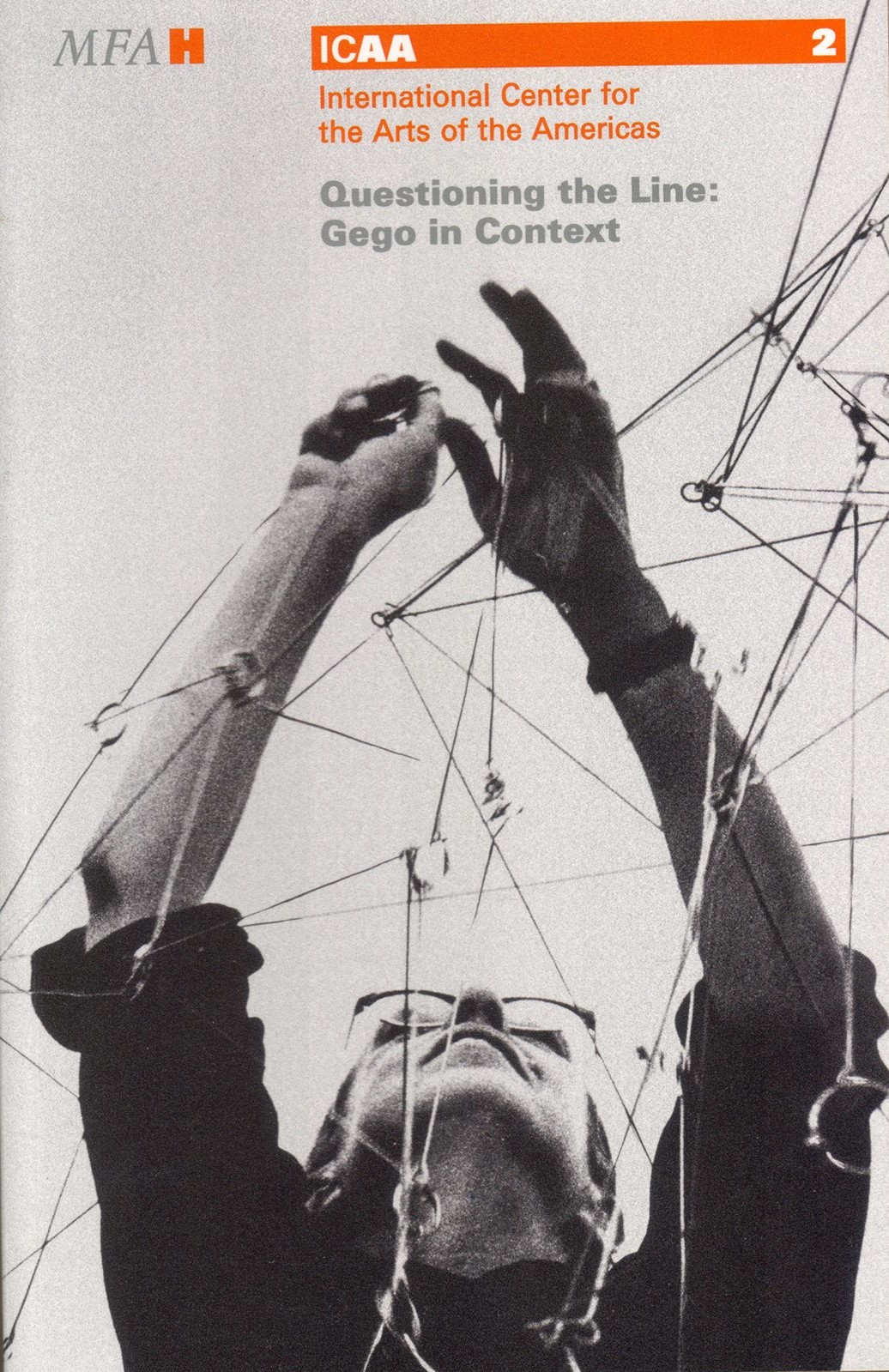
QUESTIONING THE LINE: GEGO IN CONTEXT
(2003)
Though once little known outside Latin America, Gego (Gertrude Goldschmidt, 1912–1994) enjoyed a dialogue with 20th-century artists and movements active not only in Venezuela, but also worldwide. Her creative evolution, however, leaves no doubt concerning the independence and radical nature of her proposals.
One of the defining points in her work is the total autonomy achieved by drawing—over and above its role as a point of reference for other media—that more fully asserted itself once she began to challenge the traditional uses, notions, or expectations of “the line.” Edited by Mari Carmen Ramírez and Theresa Papanikolas, Questioning the Line—the second in the ICAA-MFAH series of scholarly colloquia publications—examines Gego’s work in relation to Modernism, Informalism, Kinetic art, and other tendencies, and situates the artist in her proper international context. Included in the book are essays by Mari Carmen Ramírez, Iris Peruga, Richard Shiff, and Luis Pérez Oramas, among others.

COLLECTING LATIN AMERICAN ART FOR THE 21ST CENTURY
(2002)
This first publication of the ICAA-MFAH scholarly colloquia book series explores the radical quality of the shifting profile of Latin American collections at the dawn of a new century.
Among the key (and, at the time, representative) questions it considers are: What are the challenges of collecting the art of such a heterogeneous region? How have local collectors balanced individual tastes with the demands of a globalized art world? Questions of this sort are not only still relevant today; they also underscore just how timely the book was when it was published in the context of a confusing overall scene that was barely being researched or confronted. Featuring a series of case studies edited by Mari Carmen Ramírez and Theresa Papanikolas, along with contributions by Tomás Ybarra-Frausto, Olivier Debroise, Beverly Adams, and Luis Pérez Oramas, this book examines the history and context of this largely unprecedented trend as well as the art it was producing.
